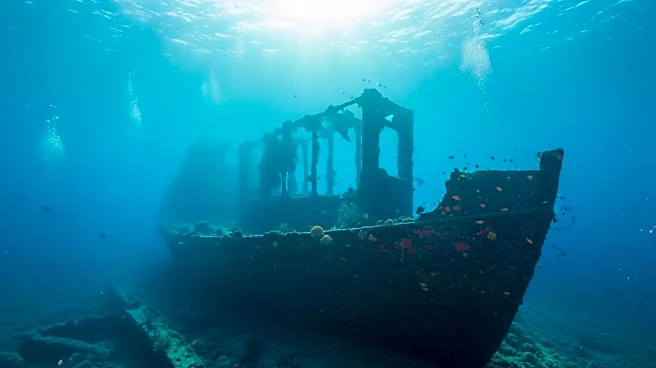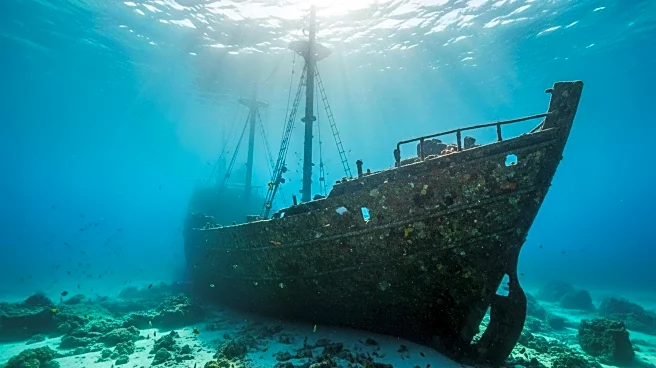What is the story about?
What's Happening?
Researchers have published a study on the Gribshunden, a Danish-Norwegian flagship that sank in the late 1400s. The ship, discovered off the coast of Sweden, is the best-preserved example of a late medieval carvel warship. The study highlights the ship's artillery, including small-caliber guns used for close-range combat. The Gribshunden served as a floating castle for King Hans of Denmark and Norway, consolidating his rule through diplomatic and military power. The ship's discovery provides valuable insights into naval warfare and shipbuilding during the Age of Exploration.
Why It's Important?
The Gribshunden's preservation offers a unique opportunity to study naval technology and warfare from the late medieval period. Understanding the ship's construction and armament can shed light on the evolution of naval strategies and shipbuilding techniques. This research contributes to the broader historical narrative of European exploration and dominance, providing context for the technological advancements that facilitated global expansion.
Beyond the Headlines
The study of Gribshunden may influence modern naval research, offering lessons in ship design and combat strategies. The preservation of organic materials on the ship could lead to advancements in archaeological methods, improving the study of other historic shipwrecks. The cultural significance of the ship as a symbol of power and diplomacy highlights the interplay between military and political forces in shaping history.
AI Generated Content
Do you find this article useful?















